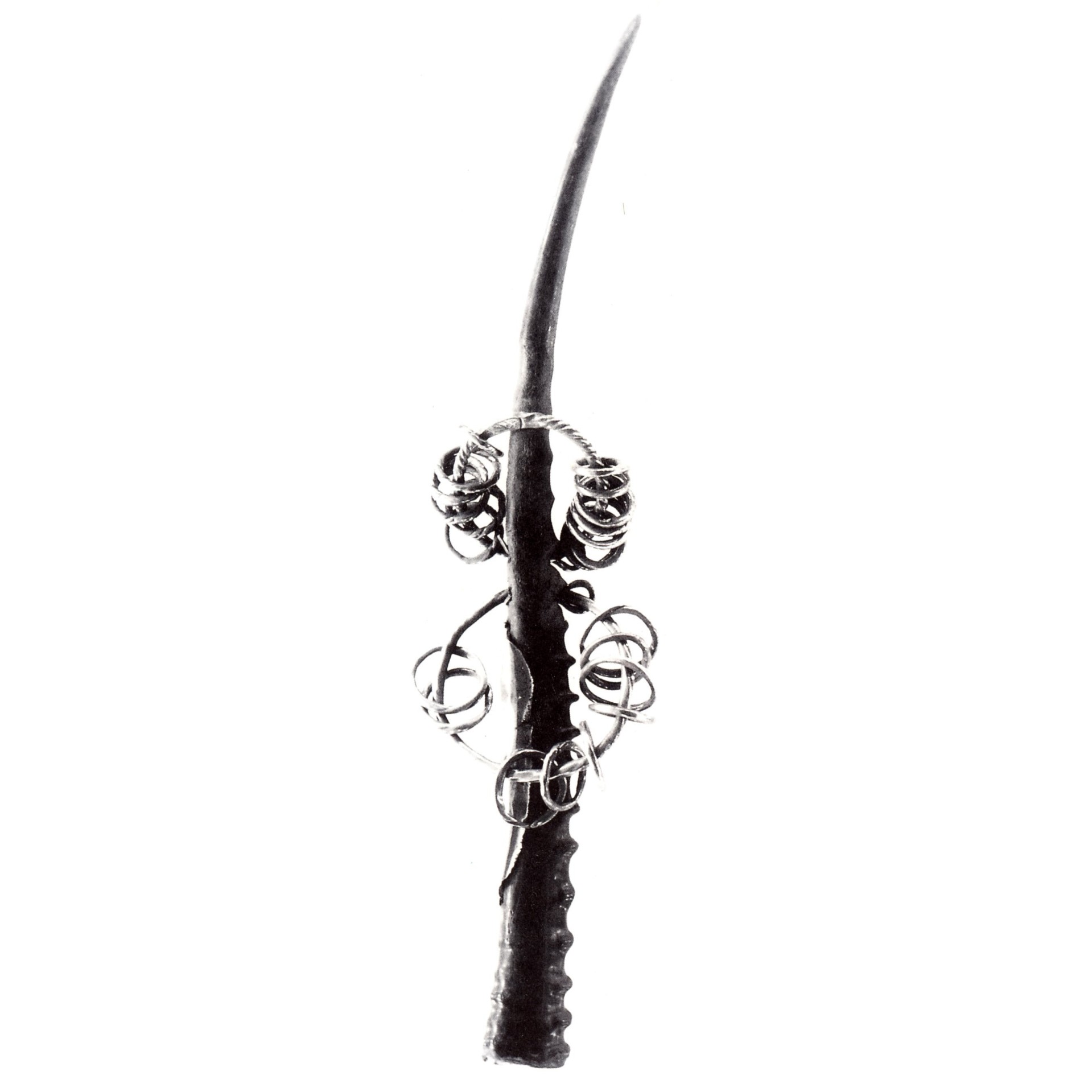sabayi overview
 Sabayi (pinyin: Sà bā yī) is a percussion instrument of Uyghur, Uzbek and other ethnic groups, popular in Xinjiang Uygur Autonomous Region. Often used for singing and dancing accompaniment, it is not only an important rhythm instrument, but also a prop for male dancers. In the folk, most of Sabay sings "Mexilep" accompaniment, adding a warm atmosphere.
Sabayi (pinyin: Sà bā yī) is a percussion instrument of Uyghur, Uzbek and other ethnic groups, popular in Xinjiang Uygur Autonomous Region. Often used for singing and dancing accompaniment, it is not only an important rhythm instrument, but also a prop for male dancers. In the folk, most of Sabay sings "Mexilep" accompaniment, adding a warm atmosphere.Sabai is divided into horn Sabai and wooden pole Sabai. The horn sabayi is a horn of a sheep (the superior uses antelope horn). The corner length is about 470mm. The horn body is wrapped with iron sheets, and two holes are drilled through, and two large iron rings are fixed, and 9 to 15 small iron rings are fastened on the large iron rings. The wooden pole Sabai is two jujube wooden sticks side by side, the length of the stick is not less than 310mm, and the thickness of the stick is not less than 15mm. The body of the stick is wrapped in iron, with two holes drilled through, and two large iron rings are fixed, and 9 to 15 small iron rings are threaded on the large iron ring.
When playing, the lower end of the wooden stick in the right hand shakes or hits the left hand, shoulders, etc., so that the big iron ring hits the wooden stick to make a sound, and the small iron ring also emits a rhythmic sound. There is iron sheet where the big iron ring touches the stick to protect the stick and make the sound crisp. Hold the lower part of the wooden stick in your hand, and use the throwing force of your wrist and arm to shake the wooden handle rhythmically, so that the iron ring hits the wooden stick, making a metal "splash" sound. "Sabayi Dance" (Han called "Hoop Dance") is a Uyghur folk dance performed by dancers holding Sabayi.
- Pinyin:Sà bā yī
- category:percussion
- nationality:Uyghur, Uzbek and other ethnic groups
overview of other similar instruments
- sanyanxiao overview
- Daguangxian overview
- Leiqin overview
- hahao overview
- yandundagu overview
- Han Xiaozheng overview
- Fang Xiang overview
- guanzi overview
- zhuqin (Dao Qin) overview
- zhuiqin overview
- bangzi overview
- three-stringed piano overview
- Gehu overview
- xiao overview
- xiaokonghou overview
- Konghou overview
- Sheng overview
- suona overview
- hulusi overview
- gushao overview
 渝公网安备 50010702504639号
渝公网安备 50010702504639号